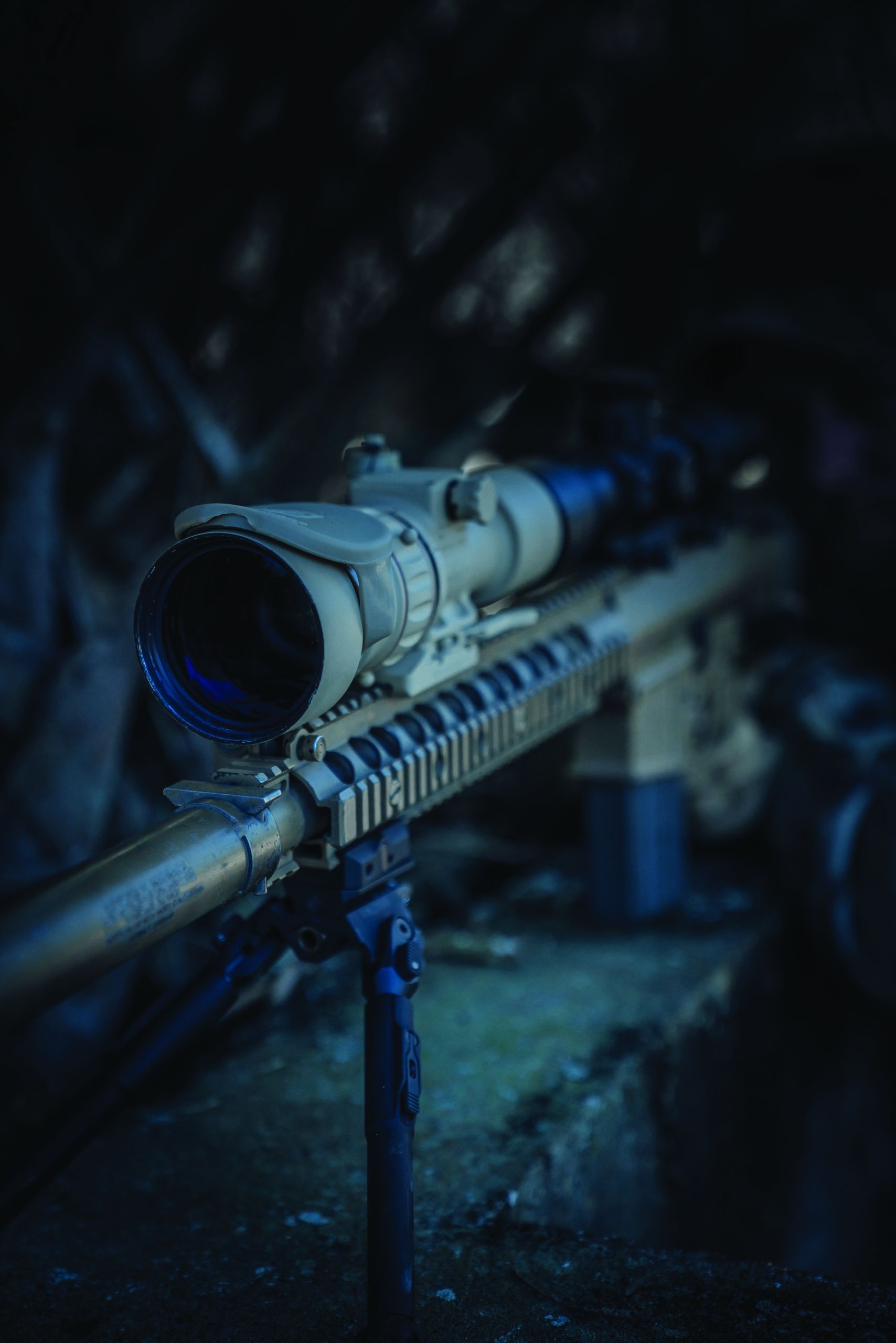Knight’s Armament Company has a consistent theme to all firearm product lines: optimized performance for the individual user through evolutionary design. This commitment is recognized in the major categories: performance, reliability, adaptability, ergonomics, and weight. KAC was one of the first companies to implement ambidextrous controls on production firearms, and we continue to evolve and perfect user-interface points to promote safety, confidence in manipulation, and intuitive application. The evolution of operating systems and major force-bearing parts in KAC firearms provides the user with unparalleled system life and extended reliability and operational robustness. As one of the original creators of accessory mounting and modular interface systems, KAC continues to improve the ability of the user to configure their system to best match the mission, expectation, and application of the firearm. KAC is committed to providing an “out of the box” optimized product for the most critical tasks.
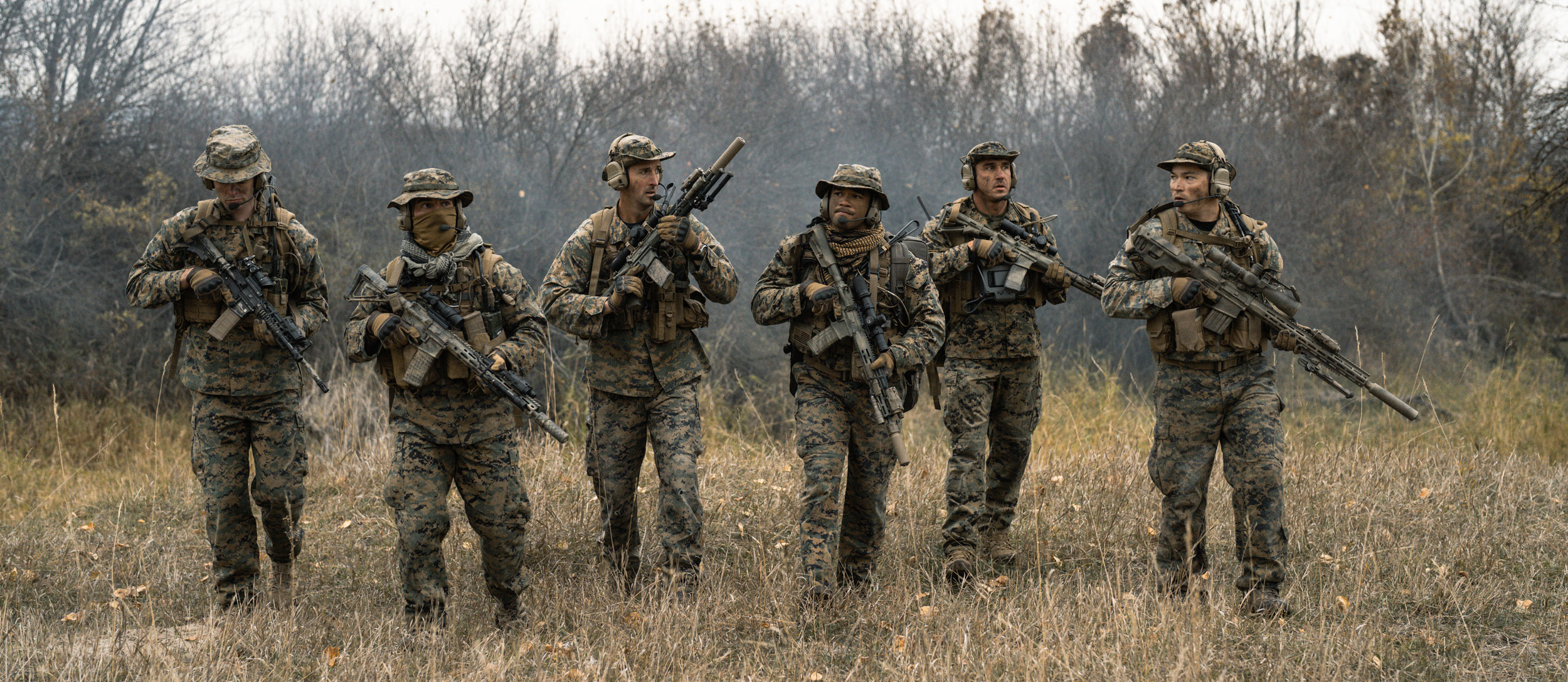

The M110 Semi-Automatic Sniper System (SASS) and its variants are current program of record 7.62mm NATO and 6.5mm Creedmoor sniper and sniper support rifles across the US Armed Forces, and in service with our international allies. First fielded experimentally in the early 1990s as the SR-25, the rifle was quickly refined into the Mk 11 Mod 0 for adoption with USSOCOM units. These systems were proven to be highly effective and efficient in modern conflict. Almost immediately, systems optimized for specific tasks were developed and refined to meet the changing face of sniper and precision marksman employment; from 14.5” barreled 7.62mm battle rifles to 22” barreled 6.5mm Creedmoor precision systems. KAC’s constant pursuit is reduced weight, optimized length, and improved performance of the platform based on user feedback, defined needs, and robust testing. Every M110 offered has been designed and refined for specific requirement sets, evaluated and validated to be suitable for the conditions of modern combat.
Since the advent of maneuver warfare, effective high volume sustained fire has been the single most decisive factor in enabling small unit movement during the assault, and denying opposing maneuver during counter-assault and consolidation. Numerous weapon types have been used in this role, ranging from traditional light machine guns to heavier versions of standard rifles and carbines. Each of these failed to achieve optimal results, most commonly due to excessive burden, lack of sustained fire capability, or insufficient platform lifespan. Recognizing the unique needs of the assault element, and learning from the deficiencies of past efforts, Knight’s Armament Company has designed and developed unique solutions to meet the needs of a highly mobile element. The family of Assault Machine Guns delivers the needed sustained volume of fire to an assault element at the lowest possible weight to leverage speed of movement as a tactical advantage. With low cyclic rate and optimized operating systems, they are immediately more controllable than other similar, significantly higher weight machine guns. The optic mounting rail is integral to the receiver, rather than the feed-tray cover, improving consistency in optic mounting, and simplifying common basic manipulations. Classic machine gun features such as a quick-change barrel, compatibility with linked ammunition, and ammunition drum attachment are standard. Available in common calibers such as 5.56mm and 7.62mm NATO, as well as alternate intermediate calibers such as 6.5mm Creedmoor and .260 Remington.
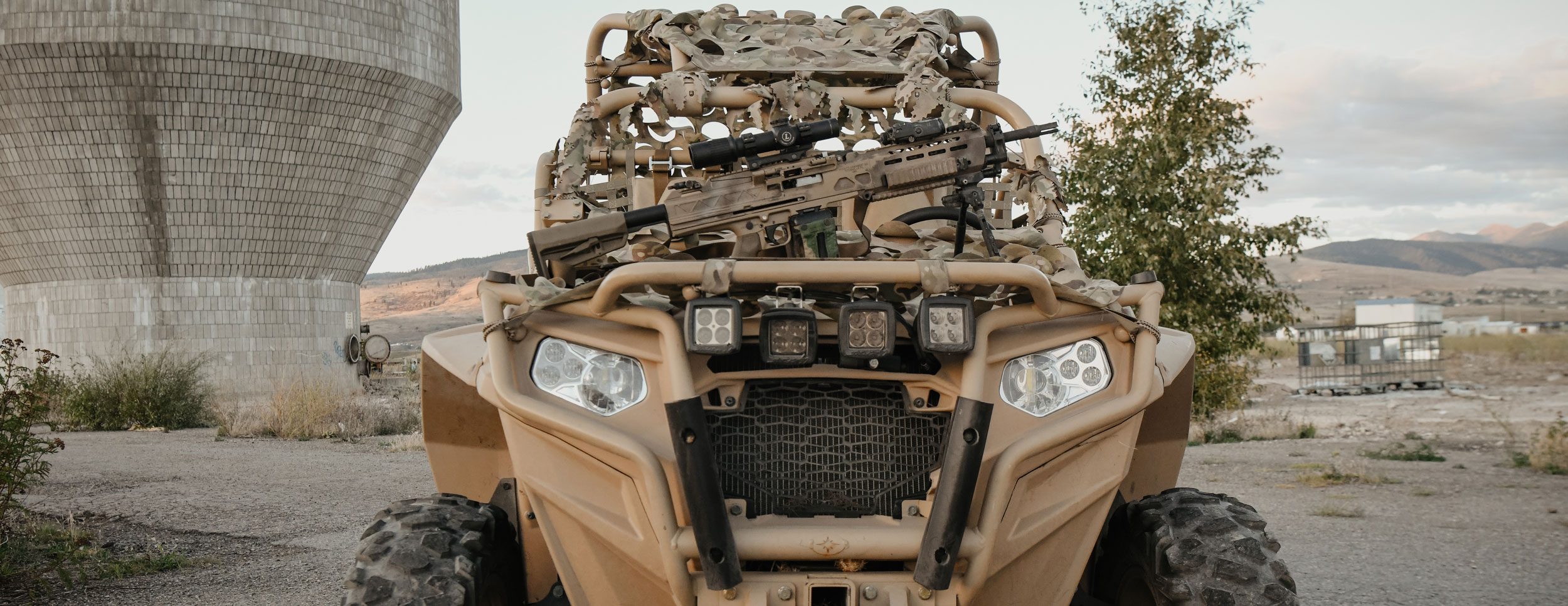
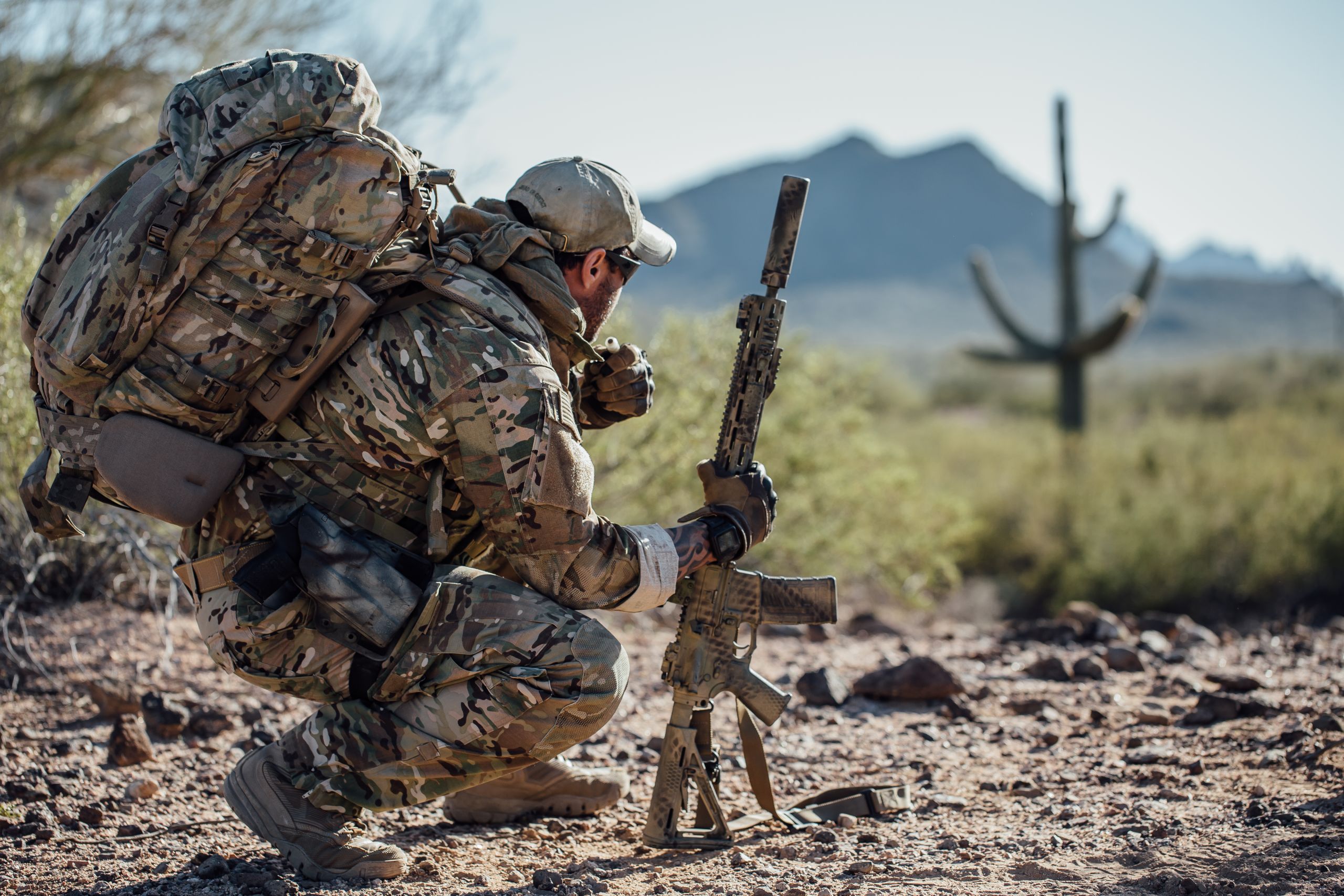
The SR-16 line of 5.56mm NATO rifles have an established lineage of superior performance. The KS-series of carbines is the next step in Knight’s continued refinement of the AR-15 platform, with improvements to ergonomics, maintenance procedures, and function. The KS-Series of carbines are available in multiple barrel length configurations, each optimized to meet various needs and requirements. Each configuration has been built to exceed stated requirements, suppressed and unsuppressed, across environmental and performance spectrums. The URX6 handguard system offers not only ample M-LOK negative-space mounting provisions and a comfortable grip profile, it is also notably resistant to shift from impact, while also easily replaceable. The KAC E3.2 bolt improves upon the durability and functionality of our renowned E3 bolt design, directly addressing ejection performance, specifically when using a suppressor with a short-barreled carbine. The lower receiver has been updated with a functionally mirrored bolt catch and release on both sides of the receiver. Each SR-16 model was born from professional-user programs, resulting in purpose-built solutions to specific 5.56mm carbine requirements, as well as single solutions to cover multiple applications.
The SR-25 Mod 2.6 series of large frame rifles is the next step in Knight’s continued refinement of the platform, with improvements to ergonomics, maintenance procedures, and function. The SR-25 is available in 6 different caliber and barrel length configurations, each optimized to meet various needs and requirements, mirroring the M110 line. Each configuration has been built to exceed stated requirements, suppressed and unsuppressed, across wide environmental and performance spectrums. The URX6 handguard system is notably resistant to shift from impact, while also easily replaceable. The lower receiver has been updated with a functionally mirrored bolt catch and release for true bilateral use. The SR-25 has been a leader in real-world use of large-frame semi-auto rifles since the late 1990’s, and the Mod 2.6 SR-25 line continues that tradition.
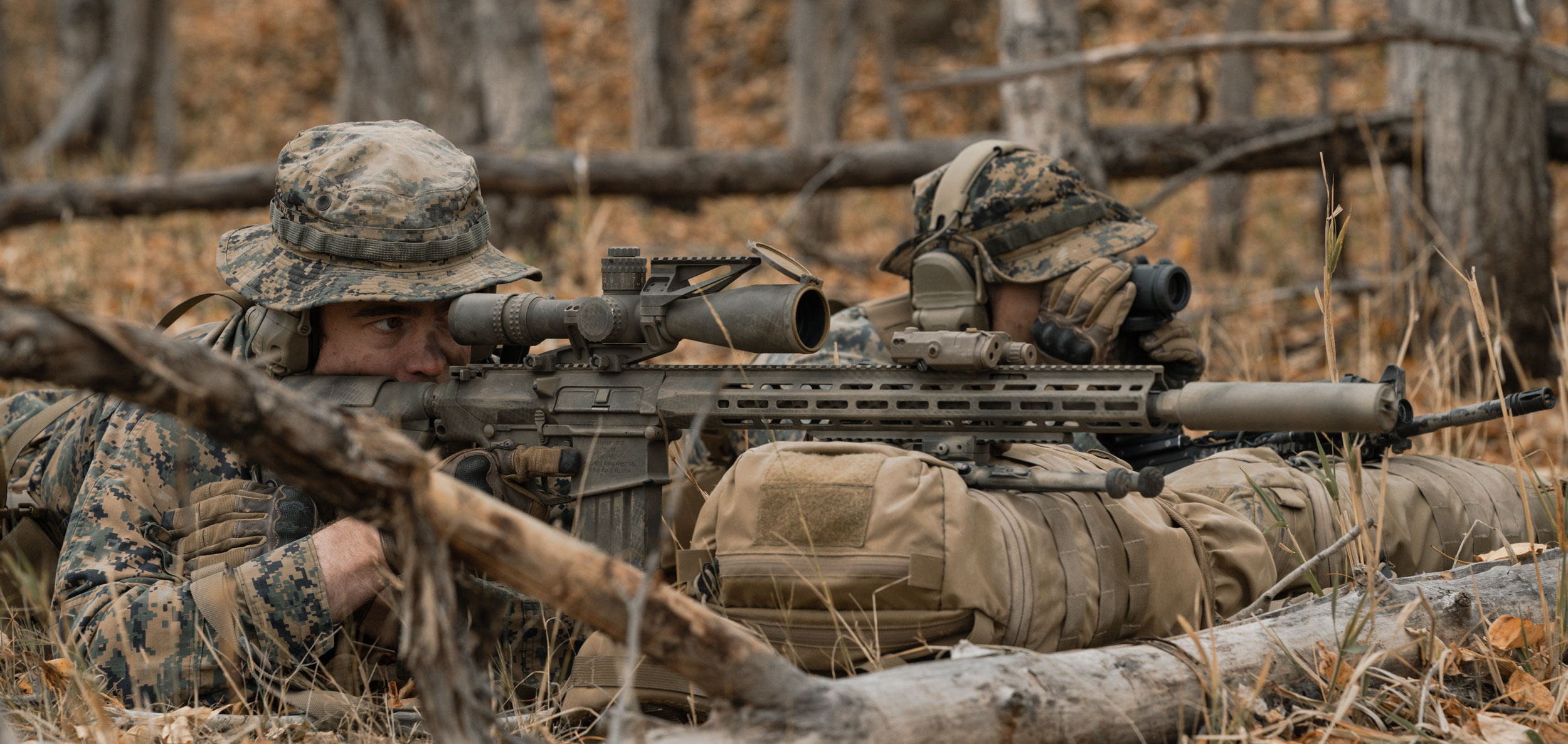
The KS-series of carbines is the next step in Knight’s continued refinement of the AR-15 platform, with improvements to ergonomics, maintenance procedures, and function. The KS-Series of carbines are available in 4 barrel length configurations, each optimized to meet various needs and requirements. Each configuration has been built to exceed stated requirements, suppressed and unsuppressed, across environmental and performance spectrums. The URX6 handguard system is notably resistant to shift from impact, while also easily replaceable. The KAC E3.2 bolt improves upon the durability and functionality of our renowned E3 bolt design, directly addressing ejection performance, specifically when using a suppressor with a short-barreled carbine. The lower receiver has been updated with a functionally mirrored bolt catch and release. Knight’s commitment to constant improvement has refined Mr. Eugene Stoner’s innovative AR-15 design to be a new standard in small arms.
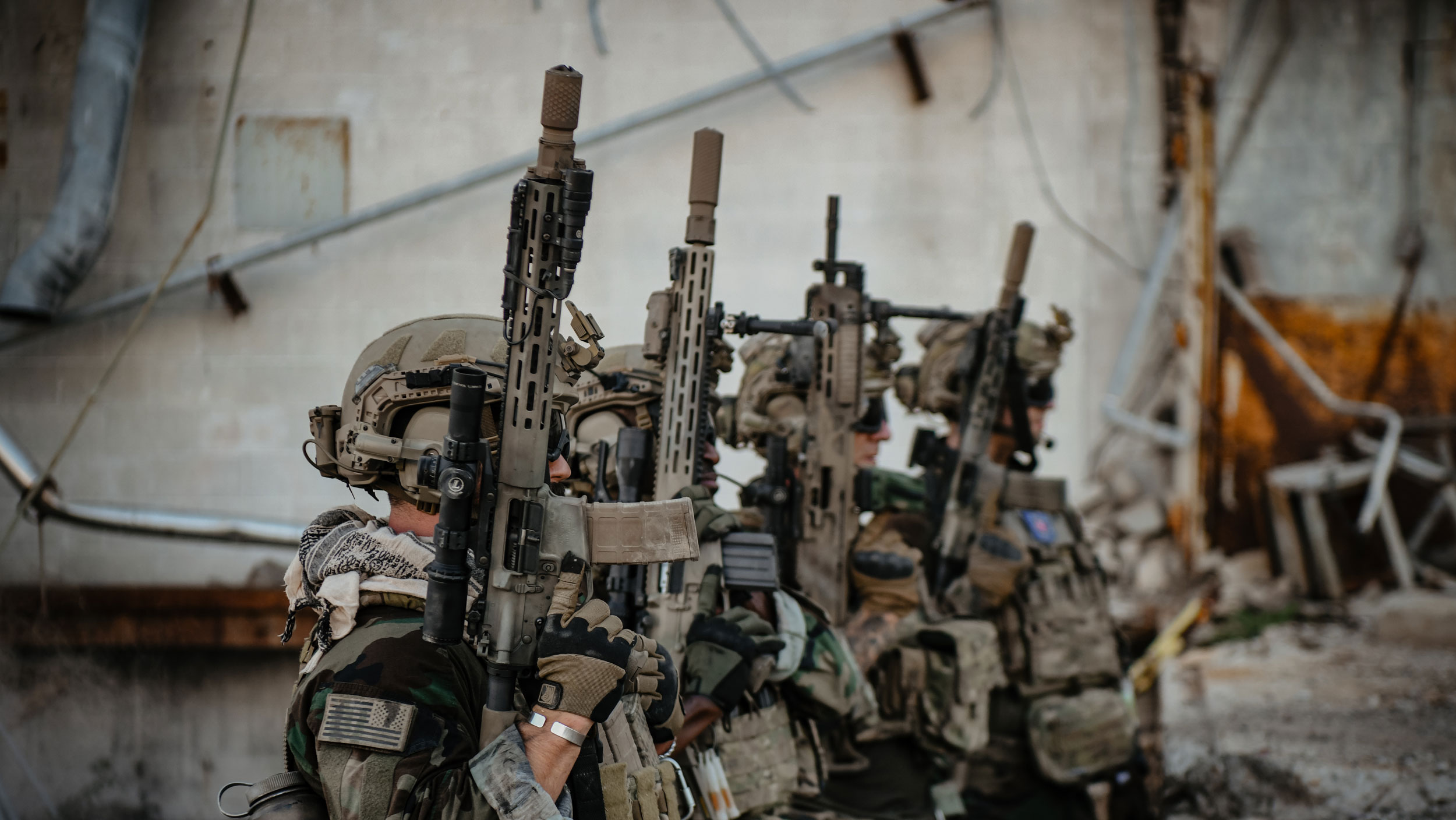
Knight’s Armament suppressors are designed and built to meet the defined requirements of professional users. Our priorities are to reduce the dangerous sound levels of firearms as well as the risks and negative effects of suppressor use on both on the host system and user.
Suppressors, by definition, reduce the acoustic consequence of firearm use, however, in many cases flash (especially first-round flash) is increased. This increased flash can degrade dark-adapted vision as well as the performance of image intensification devices. Our patented Auto-Purge design technology directly addresses first-round flash and first round pop by diverting muzzle pressure to specific areas inside the suppressor to displace combustible gasses from the internals of the suppressor.
Suppressor use on a gas-operated system can also have detrimental effect on operation and reliability due to increased residual bore pressure that leads to increased fouling and increased force applied to operating parts. Residual backpressure also increases exposure to harmful gasses and particulates by the user. KAC’s current line of suppressors are designed to release retained bore pressure prior to case extraction, greatly reducing backpressure.
Durability and robustness are key attributes for a professional-use suppressor. The additively manufactured Inconel 718 mono-cores are designed with the aid of cutting-edge blast analysis and material property simulations to manage the extreme temperatures of high-density use. KAC suppressor durability is proven to be second to none.
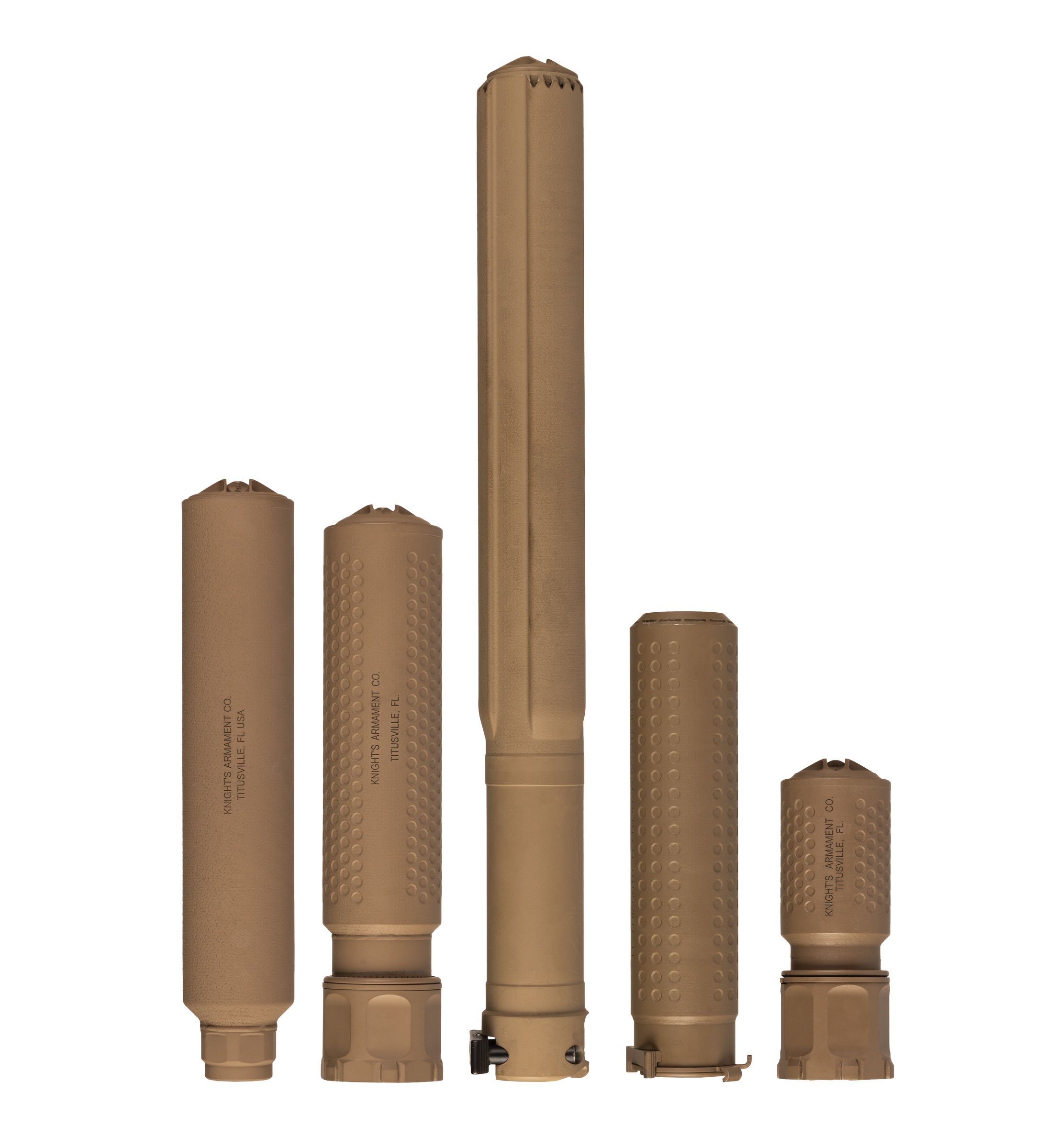
Knight’s Armament has been at the forefront of user interface improvements for small arms since the mid 1980’s. While watching the televised events unfolding during Operation Urgent Fury, Reed envisioned a better solution than the hose clamps and duct tape that service members were using to attach flashlights and other enablers to their rifles. This concept would evolve into the Rail Interface System and Rail Accessory System replacement handguards for the M16 and M4, originally a SOCOM initiative, and later refined for widespread general issue. The RIS and RAS brought MIL-STD-1913 “Picatinny” accessory mounting rails to the fore-end of every M4 and M16 in the US Armed Forces, revolutionizing individual customization and fitment of the individual rifle/carbine. The market was soon flooded with 1913 rail accessories for use on the KAC RIS/RAS and other similar products, from vertical foregrips and sling-swivel attachment points to clip-on inline night vision devices and infrared lasers. The age of individual configuration had begun. KAC continues to develop and improve the method by which the individual user interacts with their firearm.
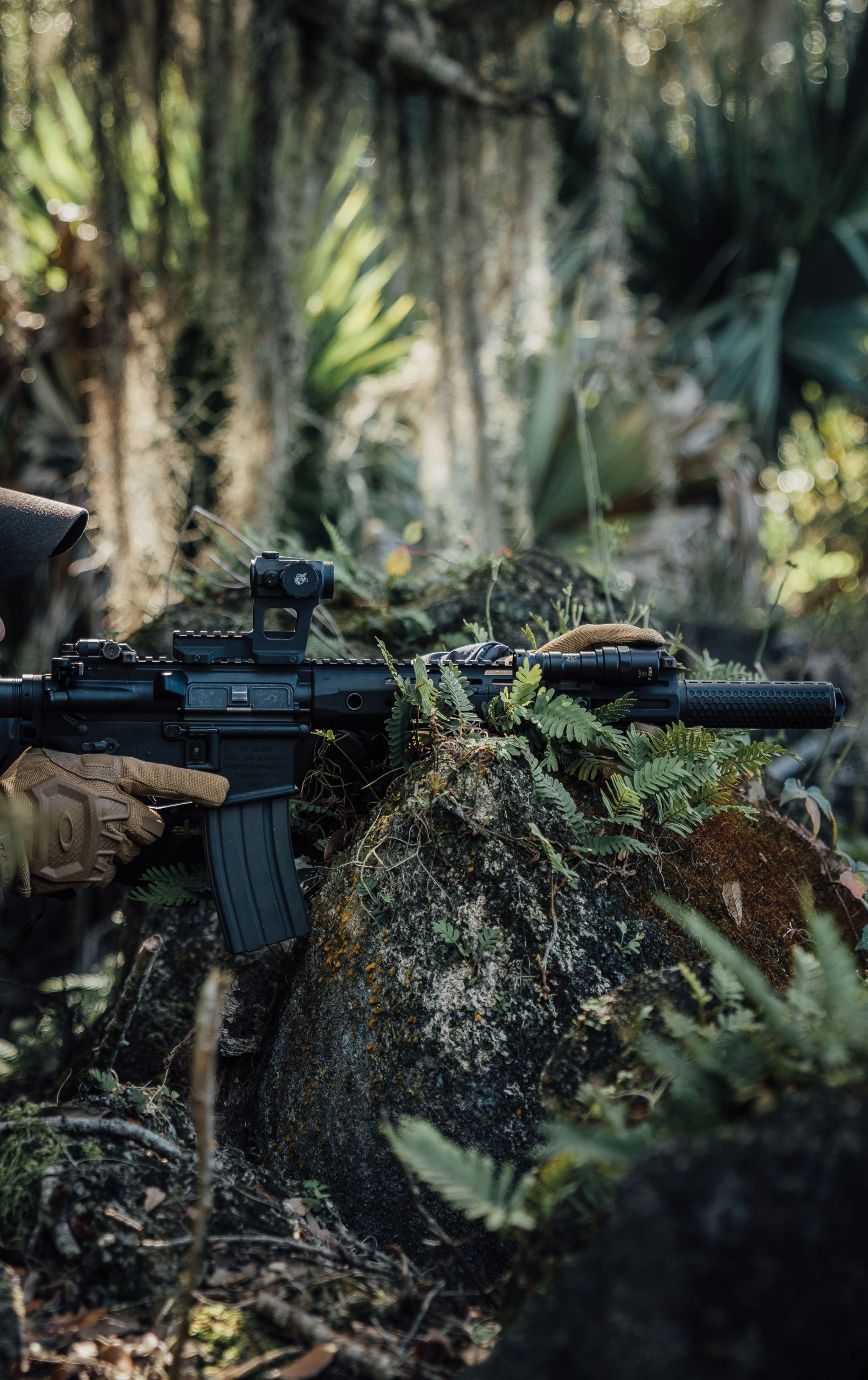
Reed Knight accomplished what was previously considered impossible when faced with the challenge of providing precision shooters with a method of target acquisition and precision engagement under limited visibility lighting conditions while using the aiming reference of the user’s usual day optic, but without incurring a shift in the point of impact. With the creation of clip-on in-line night vision devices that adhered to these requirements, so too was born Knight Vision LLC (KVC), a division of Knight’s Armament Company that sits at the cutting edge of night vision technology for the precision shooter. From the PVS-22 to the PVS-30, KAC is the current program of record holder for several sniper night sights and thermal imaging devices.

KVC’s line of upgrade options for common headborne monocular devices brings unparalleled versatility and modularity to previously underutilized systems, and allows for integration with new technologies. The ability to effortlessly move optics from a lightweight dual-device helmet bridge to a weapon mount for use in conjunction with a mounted day optic, and back again, enables the user to switch from an active emission targeting system to a passive aiming solution, while reducing the need for multiple devices. Finely controlled tolerances and clearances, along with device fitment adjustment, eliminate distracting wobble and the need for external tensioning methods. These accessories and upgrades are specifically crafted to enhance the use of night vision devices for the most demanding applications.
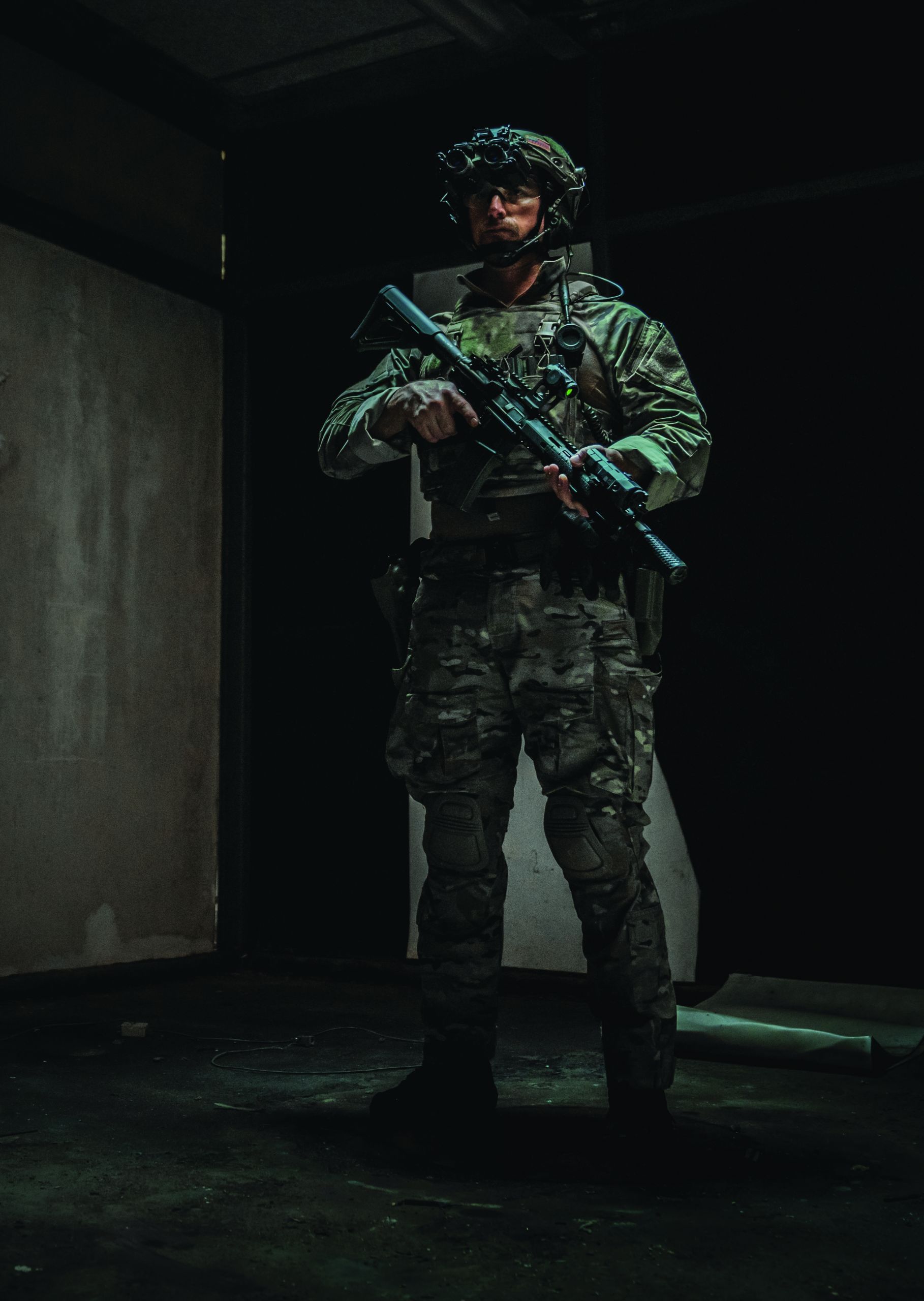
The Knight Vision line of Image Intensified sights set the standard for low-light operations. Our systems are in constant use throughout the world with a wide array of customers. Several layers of patented technologies produce optics that have high battery life, excellent retention of day optic zero, and combat proven durability. The line allows for versatility from short to long range applications. Regardless of rifle type, provided it has a 1913 rail, KVC can provide a solution for low-light operations.
